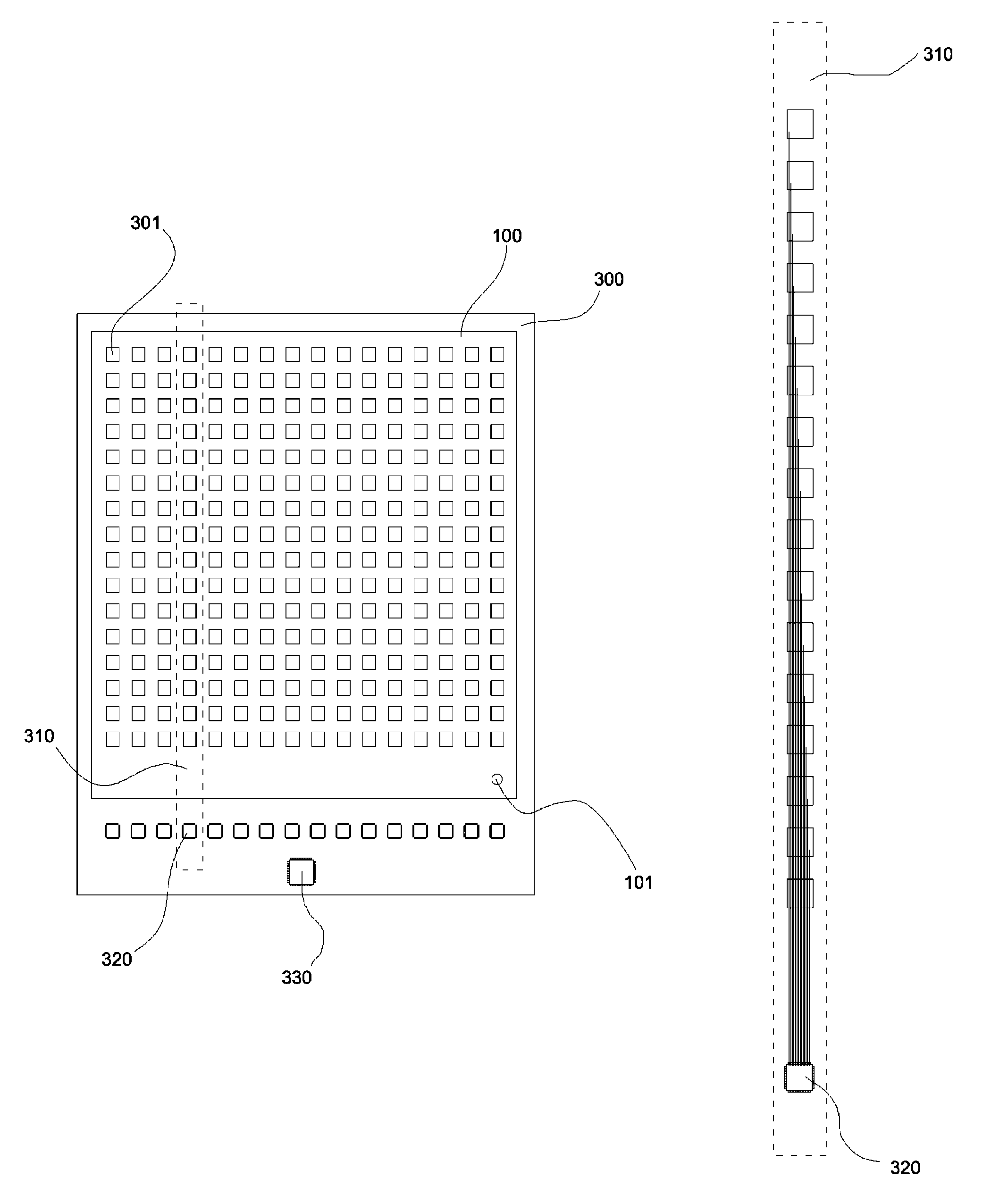Capacitive tactile tile sensor
a technology of tactile tile and sensor array, which is applied in the field of sensors, can solve the problems of unsuitable multi-curvature shapes such as robot fingers, other organic shapes, and unpliable sensors so constructed, and achieve the effect of increasing the ease of manufacturing and improving the reliability of operation of the sensor array
- Summary
- Abstract
- Description
- Claims
- Application Information
AI Technical Summary
Benefits of technology
Problems solved by technology
Method used
Image
Examples
Embodiment Construction
[0033]A detailed description of the present invention follows with reference to accompanying drawings in which like elements are indicated by like reference letters and numerals.
[0034]FIG. 3 shows a capacitive tile tactile sensor array according to the invention. It includes a top electrode ground layer 100 separated from the bottom sensing layer 300 by a compressible dielectric layer (not numbered). The top layer can be made from a conductive cloth, flex printed circuit, have a conductive metal surface formed thereon or be formed intermittently by a conductive object coming in contact with the sensor array from time to time.
[0035]The bottom sensing layer contains an array of individual electrodes 301, each of these electrodes forming an individual sensor in combination with the top layer and a dielectric layer. These electrodes are divided into groups; in this example each vertical column forms one such group of electrodes, for example a fourth from the right column of electrodes i...
PUM
| Property | Measurement | Unit |
|---|---|---|
| flexible | aaaaa | aaaaa |
| pressure | aaaaa | aaaaa |
| time | aaaaa | aaaaa |
Abstract
Description
Claims
Application Information
 Login to View More
Login to View More - R&D
- Intellectual Property
- Life Sciences
- Materials
- Tech Scout
- Unparalleled Data Quality
- Higher Quality Content
- 60% Fewer Hallucinations
Browse by: Latest US Patents, China's latest patents, Technical Efficacy Thesaurus, Application Domain, Technology Topic, Popular Technical Reports.
© 2025 PatSnap. All rights reserved.Legal|Privacy policy|Modern Slavery Act Transparency Statement|Sitemap|About US| Contact US: help@patsnap.com



